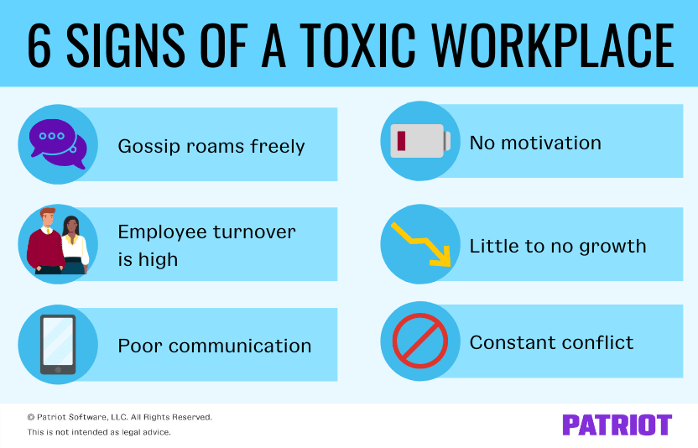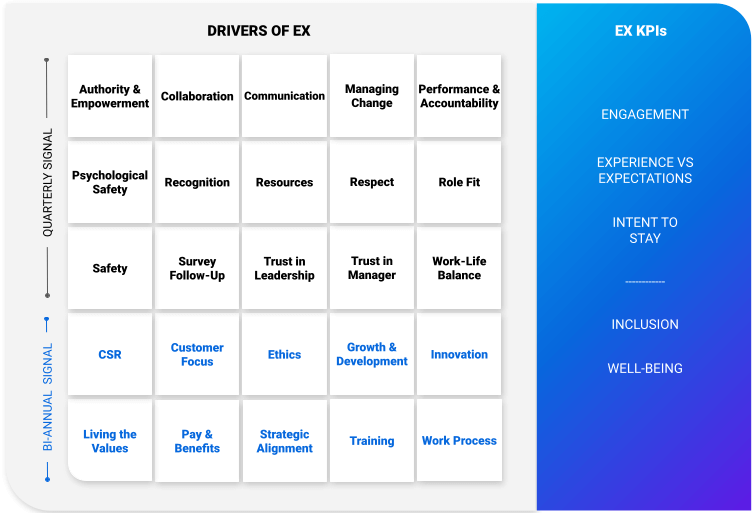What is organisational culture?
When you search for a definition of ‘company culture’ or ‘corporate culture’, it’s likely that you’ll come across something like this:
Shared values, goals, ethics, expectations, and beliefs all add up to company culture – and drive how decisions are made, what actions are taken, and the business results that follow. Typically, culture originates with an organization’s founders or leaders and trickles down to employees.
But how do these manifest themselves when you walk through a company’s door? Most explanations seem nebulous at best, and there really is no standard definition of what company culture is.
We like this definition of corporate culture from Phil Lewis in Forbes:
Culture is the social order of a business. It is the unseen narratives, legends, hierarchies, processes and politics which govern what gets done and how. You might consider it to be the Operating System of a business. Look at your iPhone. The OS is not the star of the show but it runs all the applications and impacts the functionality of the whole device.

Organisational culture types
When you look around your friends, chances are some will wear suits to work while others get away with slouchware; some will have a loose approach to keeping office hours, and others seem to socialise almost exclusively with work colleagues. All these behaviours reflect the cultural traits of the companies they work for.
These can be grouped into categories:
1. Hierarchy culture
This is a traditional company with strict guidelines governing roles, dress code, and departments that don’t tend to interact. This risk-averse culture tends to focus on numbers, and is bottom-line driven, sometimes putting profit over customer experience. It’s the CEO who makes the decisions, leaving little room for input from employees further down the line, who may feel frustrated or ‘just a cog in a machine.’
2. Team first culture
A more enlightened company, that has employee engagement as its top priority, just above customer experience. Departments intermingle socially inside and outside work, good work-life balance is standard, people take pride in their environment, and feedback is solicited often and responded to thoughtfully.
3. Elite culture
An intense place to work, elite companies aim to take risks, disrupt and change the world. They hire the best from many highly-qualified applicants, expect them to make work a priority and put in long hours, promote them rapidly, and take notice when their people question things or suggest improvements. It can be a high-pressured environment, which requires superior perks and well-being programs to balance out the intensity.
4. Horizontal culture
When the CEO makes you a coffee and asks the intern what they think of a new project proposal, the company is probably horizontal. Common in new startups, the culture is collaborative, flexes with the market, feedback, and employee suggestions, everyone mucks in and gets their hands dirty, and the customer is king and queen.
5. Adhocracy culture
An authentic adhocracy culture is one that is sufficiently agile to adapt rapidly to change. Adhocracies encourage individual initiative, empower employees to get on with the job, and allow flexibility. Leadership is less clearly defined than the other organisational cultures, which can lead to both chaos and creativity.
6. Clan culture
This is a company with a friendly, family atmosphere where employees have similar interests and are heavily involved in the business. Often a feature of small companies and startups, there are fewer management levels, high employee engagement, and an emphasis on teamwork and collaboration. The C-suite are less monster, and more mentor.
Why should companies care about organisational culture?
Corporate culture plays an integral role in employees’ overall job satisfaction and success. When people feel their needs and values fit with their employer’s, they’re more likely to enjoy going to work, get on well with their colleagues, innovate, and be more productive.
And for any CFO doubting whether creating the best organisational culture delivers a return on investment (ROI), the top three global corporations with the best company culture are also enviably profitable.
There are many benefits, financial and otherwise, to fostering a great organisational culture:
Increased revenue
Engaged employees help drive business results, with engaged workplaces being 21% more profitable than those that are not.
Increased productivity
When employees are aligned with the organisational culture and engaged with their work, companies see higher levels of productivity. A team-orientated company that hires people who thrive in a collaborative environment will help drive productivity.
Increased retention
When employees chime with the culture, they tend to stay – increasing retention rates and lowering costs associated with hiring.
Higher engagement
Employees who enjoy every aspect of their job and their company’s culture are more engaged, and 88% of employees believe a distinct workplace culture is important to a business being successful.
Reduced stress
Work-related stress and mental illness costs US companies more than $300 billion a year; a positive company culture with shared values should alleviate stress, not cause it.
Better well being
60% of employees said they would be more likely to recommend their organisation as a good place to work if their employer acted to support employee wellbeing.
Easier recruitment
When only 54% of employees recommend their company as a workplace, it’s those companies who receive more CVs than they have available jobs.
Do you need to change your cultural values?
The world of business, and indeed the world itself is changing, post-pandemic. In the light of social shifts and geopolitical challenges it’s essential that, to remain relevant, your company keeps up. Business evolves, and if you adhere to an outdated organisational culture, you blunt your competitive edge. There are many factors that require a rethinking of corporate culture, the most common of which are:
Societal shifts
Black Lives Matter, the culture wars, the climate crisis, COVID-19. All these have shown up the flaws in old, outdated mindsets and working practices that are now unacceptable in modern businesses.
Mergers & acquisitions
Two organisations coming together, with distinct company cultures, are bound to cause disruptive change. The options for organisational change are:
- Both embrace the dominant culture
- Build a new one
Leadership change
Innovative new leaders rarely stick with the cultural status quo, and change is to be expected
A new operating model
The pandemic was the perfect example of this. Almost overnight, employees had to embrace remote working as the norm, with their tech, and IT departments working to set up and support it. And new, hybrid ways of working are emerging, post-pandemic.
New technologies
Changing technologies make companies retrain employees and rethink their ways of working with every new development brought out by the tech companies.
Losing out to the competition
Falling profits, loss of market share, and poor performance are often indicators that corporate culture may be making the right people leave, and attracting the wrong ones.
Black swans
A black swan is a rare, unexpected event that has a wide-reaching impact (think 9/11, World War 1, the invention of the internet, the collapse of the Soviet Union). An organisation’s culture often needs to be rethought in the wake of black swans.
Is your company’s culture toxic?

Image Source: Smallbusiness.patriotsoftware
A toxic organisational culture is the main reason employees quit and attrition is one of the biggest drains on a company. Look at these questions. Can you answer ‘yes’ to any of them?
- Are employees terrified of making a mistake?
- Are people’s roles and responsibilities unclear and lead to confusion?
- Are deadlines and goals regularly missed?
- Are employees unenthusiastic about their work?
- Do you have high staff turnover?
- Are employees often late or absent from work?
- Does the company have negative reviews and reputation?
- Do all genders, sexual identities, and orientations, disabilities and ages feel they are treated unfairly, are unwelcome or excluded from key decisions?
- Do any employees feel disrespected?
- Is there bullying, harassment, or backstabbing behaviour?
If you can, your entire organisation is demonstrating toxicity and choosing not to address this is a high-risk business strategy.
How to improve organisational culture
If you’re not sure what your culture is, or think you need some help reshaping outdated norms, values and behaviours, here are some things to think about:
Core values: When everyone feels they are part of something bigger, they’ll be more motivated and productive. Introduce and demonstrate your core values through HR programs, such as your careers webpage, orientation, training, and performance management.
Have a killer employer value proposition (EVP): An EVP is the offering to current employees and potential job applicants that makes you a desirable employer. It has to be uniquely good to encourage top talent to choose you over your competitors or elect to stay with you, and it has to be true and representative. A good one gives a flavour of company culture, and covers:
- Opportunity: How employees can grow and develop
- People: The quality of the leaders, managers, and co-workers, and the working atmosphere
- Organisation: The company’s prestige as a ‘great employer’ in its market
- Work: How meaningful, challenging, and fulfilling the job is
- Reward: The salary, bonuses or share options, perks, and benefits
Hire for culture contribution, not fit: Progressive companies recruit new employees for culture contribution, rather just those who fit the corporate mold, to bring unique perspectives and help grow the business. That means, hiring employees that not only align to your company’s values, but also bring diverse experiences and backgrounds to the table. Diversity is good for business. Look for people who are doers, historically getting stuff done, and remember that your employees are representatives of your company, even outside work where people talk freely.
Give meaningful workplace benefits: Installing a ping-pong table or a coffee machine won’t inspire your employees to make your startup a unicorn. But an on-site gym, free canteen, unlimited holidays, life coaching, travel allowances, or bringing your dog to work are perks that make a real difference to people. 57% of people say decent perks are a top consideration when choosing to join a company.
Give back: It’s no longer enough to see profit as the sole reason for your company to exist – it’s all about giving something back now. Whether it’s donating money to charity, sharing skills with local non-profits, pro bono work, paid volunteering days or going green, companies whose employees give back report fewer sick days on average, making the company more productive.
Reward and recognition: From Employee of the Year to a quick message saying ‘thanks for a great job’, appreciating your employees is pivotal for good company culture. Get HR to make sure that appropriate awards go to employees who best demonstrate company values.
Take well-being seriously: According to a report In 2016, only 30% of companies had a well-being strategy in place, compared with 68.4% in 2019. But there’s still a way to go. For physical wellbeing, consider healthy snacks, exercise sessions, walking meetings, screen breaks. For mental wellbeing, social events, ‘venting’ channels for managing stress, team activities, and creating a clean, pleasant environment.
How to measure organisational culture
It’s essential that all employees have a chance to voice their opinions by setting up inclusive discussions around cultural values to reshape norms and behaviours. But it’s no longer enough to make basic underlying assumptions that employee engagement is the only metric. Additional measurements are needed to give a more holistic picture of your organisation’s culture and the employee experience. In addition to employee engagement these are:
- Experience vs. expectations
- Intent to stay
- Inclusion
- Well being
Use surveys to measure your organisational culture
Leaders may agree on organisational culture, but that doesn’t mean all employees see it as their desired culture. By collecting employee experience data you’ll be able to develop strategies that support your business’s objectives and goals. And survey technology has evolved from the annual engagement survey. The best survey software will:
- Help employers stay in tune with organisation members throughout the year by sending pulse surveys at the right cadence for them, and avoiding survey fatigue.
- Use scientifically validated questions for each employee experience KPI and experience driver
- Provide dashboard templates with analysed employee feedback data for managers and leaders to understand the top drivers of employee engagement across their teams, and take action on improving those areas
- Ascribe reasonable benchmarks, so that your company’s employee experience KPIs can be compared to others in the same industry
- Feature action guidance, designed by experts, to help managers improve on each experience driver.
Our new EX25 solution that takes into account the new metrics can help you capture what your employees feel about your organisational culture.

Action issues highlighted by your surveys
When you have collected your employee feedback survey data it is essential for your company’s success that you act on the results. It may be that you need to look at your compensation structure. Employees may need more recognition. Teams may ask for more brainstorming sessions. When you take notice of the feedback, people will feel respected and listened to. And where issues cannot be actioned, acknowledge this and be transparent about what is, and isn’t, possible.
Three companies with great organisational culture
Zoom Video Communications
“We have a 100+ volunteer force of employees called The Happy Crew, tasked with organising activities around moments that matter to our people. From bringing employees together to welcome new Zoomies to planning company-wide events and intersecting with our community at large, The Happy Crew is an important driver of employee experience at Zoom. To keep things organised, they even have their own leadership team (including a captain!) and various sub-crews.
The Happy Crew played a huge part in Zoom being recognised by Comparably as the work culture with the happiest employees.”
– Lynne Oldham, Chief People Officer, Zoom US
Telefónica
“A pulse survey uncovered the biggest challenges facing Telefónica employees globally, and how the company could act in the right way.That feedback led Telefónica to take a number of actions, all of which have contributed to a higher eNPS.
Our Employee NPS is higher today [in 2020] than it was in 2019, which is a testament to how we’ve supported customers and society in this unprecedented time, and our people’s sense of belonging. At the outset of the COVID-19 crisis, we sprung into action by building and launching a pulse survey with Qualtrics.
Longer workdays and working at home dealing with family responsibilities were our two biggest concerns globally. When we looked at what people wanted, over a quarter wanted more guidance on organising their day. Nearly half were after more information balancing work and life.”
– Sergio De La Calle Asensio, Head of Engagement, Telefónica
Rogers Communications
“Through our employee experience survey, we learned that our front line employees — for example, people in our retail and call center employees — felt like their voices weren’t heard as much as our corporate employees. So ‘Voice of the Front Line’ was born.
One key initiative within the ‘Voice of the Frontline’ is a quarterly call out for ideas directly to our frontline employees on how to improve the employee and customer experience. These ideas are visible to everyone, and can be voted up by employees. The creators of the top five voted ideas have the opportunity to present the idea to a panel of directors with the top three being presented to the VPs who then choose a winning idea for the company to focus on. It’s doubly beneficial — our leaders get great ideas about improving our customer experience directly from our front line and employees also feel heard and valued.”
– Geoff Ho, PhD, Director of Organisation Development Research, Rogers Communications
Boost your company's organisational culture by starting with your employees